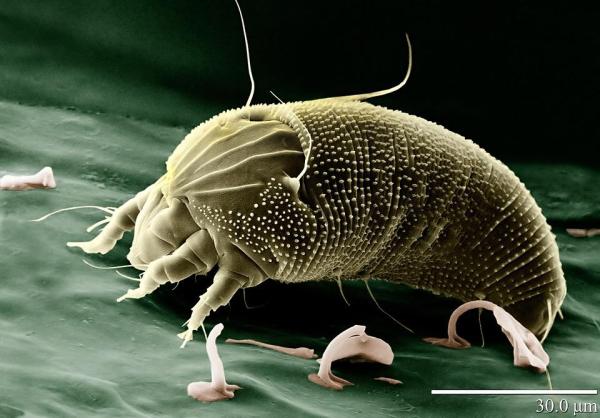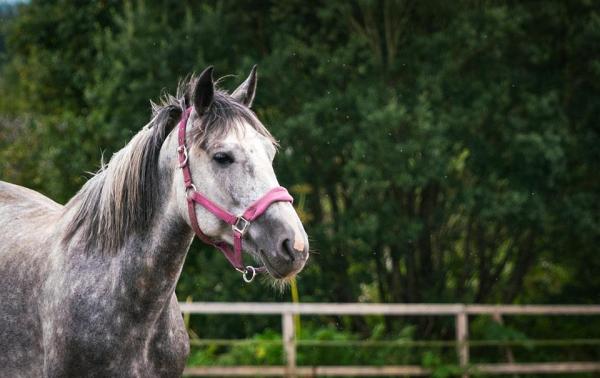Mange in Horses - Causes, Symptoms and Treatment



See files for Horses
Also known as scabies in horses, mange is a skin disease caused by the infestation of mites. It is a disease which is most associated with dogs. This is because the specific mite that causes sarcoptic mange in animals is Sarcoptes scabiei var. canis, a mite of the genus Sarcoptes which is highly contagious. There are other types of mange in dogs caused by other mites, but not all are zoonotic and can be transferred to horses. As a type of skin disease, the mites cause damage to the various layers of the horse's skin. This is because they burrow into the skin and can eat away at it, becoming very extensive in the right conditions.
At AnimalWised, we look more closely at equine scabies by looking at the causes, symptoms and treatment of mange in horses. We also look at how you can prevent this parasitic disease to best ensure the horse's wellbeing.
What is mange in horses?
Although both are caused by mites, scabies and mange have slightly different meanings. In the most general terms, mange refers to the skin disease which affects animals. When it affects humans, the name of the disease will depend on the type of mite involved. For animals, the term ‘mange’ is often used for various diseases resulting from a mite infestation. For this reason, it is helpful to look at the most common types of mange in horses:
- Sarcoptic mange: produced by the mite Sarcoptes equi which is specific to horses, but it can also be caused by Sarcoptes scabiei var. canis. Mites of this genus are well known for attacking both domestic animals and humans. For this reason, it is often commonly known as scabies. It is characterized by producing intense itching. It begins affecting the head (lips, periocular area and ears), neck, rump and loin, but can spread to the rest of the body. It produces small bumps on the skin, as well as alopecia. If the disease is allowed to progress, the horse may develop general apathy and anorexia.
- Chorioptic mange: also known as foot scabies or chorioptic scabies, is produced by Chorioptes bovi (previously known as Chorioptes equi). It causes characteristic discomfort in the legs, especially in the hooves and hindquarters, resulting in horses stamping the ground to relieve frustration. It progresses more slowly and can remain confined to a single limb for a period of time. It is often a secondary result of a condition known as chronic progressive lymphedema (CPL).
- Psoroptic mange: caused by Psoroptes equi which attacks areas of longer hair or joints. It is usually found in the neck, armpits or groin. It also produces itching.
Mange mites are tiny, spider-like parasites that lives in the skin of some animals. In addition to horses and dogs, it can be hosted by pigs, sheep and various other mammals. Importantly to horse guardians, it is a type of zoonotic disease, meaning it can be spread to humans. Of the types of mite which cause mange, not all burrow into the skin. Some can live closer to the surface and feed on various cells and secretions.

Symptoms of mange in horses
Among the mange in horses symptoms, the following clinical signs stands out:
- Itching: can be of a more or less intense severity. It may have its origin in the activity of the mite itself or in secondary infections that take advantage of the harmful action of the parasite.
- Hair loss: areas have varying degrees of alopecia due to the action of the parasite on the skin, which will end up showing a thickened appearance in prolonged or acute cases.
- Skin damage: wounds, scabs or blisters caused by constant scratching. If the are of infestation receives secondary bacterial infections, it is possible painful abscesses can occur. With sufficient neglect, it can result in blood poisoning.
- Degradation: in more severe cases, the horse may present generalized weakness, anorexia, apathy, etc.
Diagnosis of mange in horses is carried out by direct observation of the parasite under a microscope. This is a test that will require a tissue sample taken by a skin scraping. It is not always possible to locate and observe the specific type of horse parasite, so treatment is prescribed based on the characteristic symptoms and/or the response to the prescribed medication. Veterinary discretion will be required in any case.
Mange in horses treatment
The type of mite causing mange or scabies in horses will need to be identified under veterinary supervision. Once this occurs, it is the veterinarian who will be able to prescribe a specific treatment. This usually consists of acaricidal antiparasitic drugs for topical or oral use.
Generally, several applications are needed for effectiveness. We must make sure to follow the treatment until its completion to completely eradicate the parasitosis (mange is a type of parasitic disease), even if we see signs of improvement before it is complete. In some cases, drugs may be needed for secondary infections. If lotions or shampoos must be applied, we must ensure they penetrate the skin well. This may require trimming the horse's hair.
We must disinfect the horse's stable and any accessories the horse uses, such as their saddle. This is required to eliminate the mite from the environment since contagion occurs through direct contact. We must also wash our hands well after handling the animal. Scabies is usually very contagious, so it is crucial to maintain preventive measures such as those we will describe in the next section.

Prevention of mange in horses
The prevention methods to avoid mange in horses is aimed at maintaining the horse's hygiene and overall health. This helps to prevent the spread of the mite in the first place, as well as minimize the risk of contagion to other horses or reinfestation of the same horse. These horse mange prevention methods include the following:
- Comply with the deworming, vaccinations and veterinary check-ups scheduled by our veterinary professional.
- Maintain adequate horse hygiene, paying special attention to brushing and bathing.
- A quality, balanced diet for horses needs to be adapted to their specific needs.
- Provide ample space to exercise, as well as a clean stable in which the horse can sleep comfortably.
- Avoid overcrowding since this parasite is transmitted through direct contact.
When introducing new horses to a stable, we must ensure they are properly dewormed. If we do not know this information, we must maintain a period of isolation during which deworming is administered.
This article is purely informative. AnimalWised does not have the authority to prescribe any veterinary treatment or create a diagnosis. We invite you to take your pet to the veterinarian if they are suffering from any condition or pain.
If you want to read similar articles to Mange in Horses - Causes, Symptoms and Treatment, we recommend you visit our Skin problems category.







